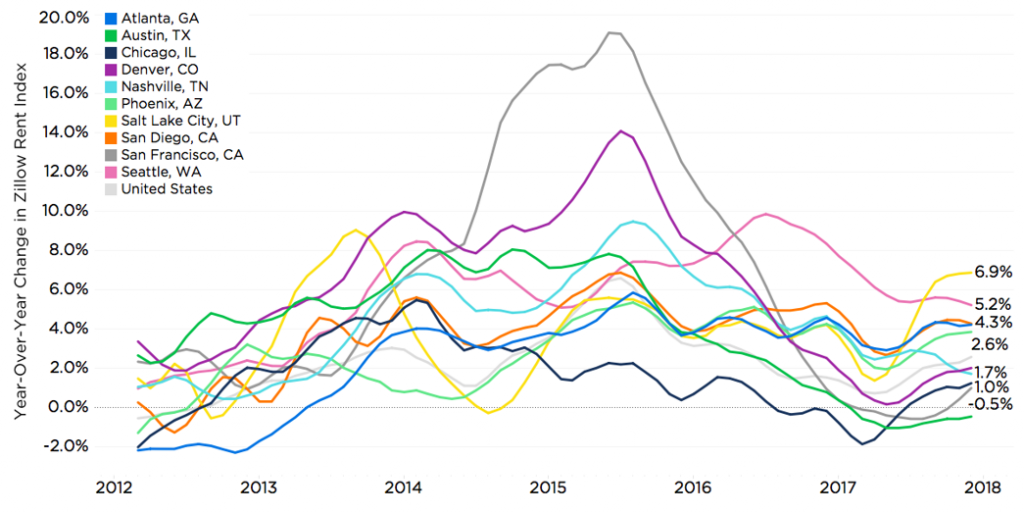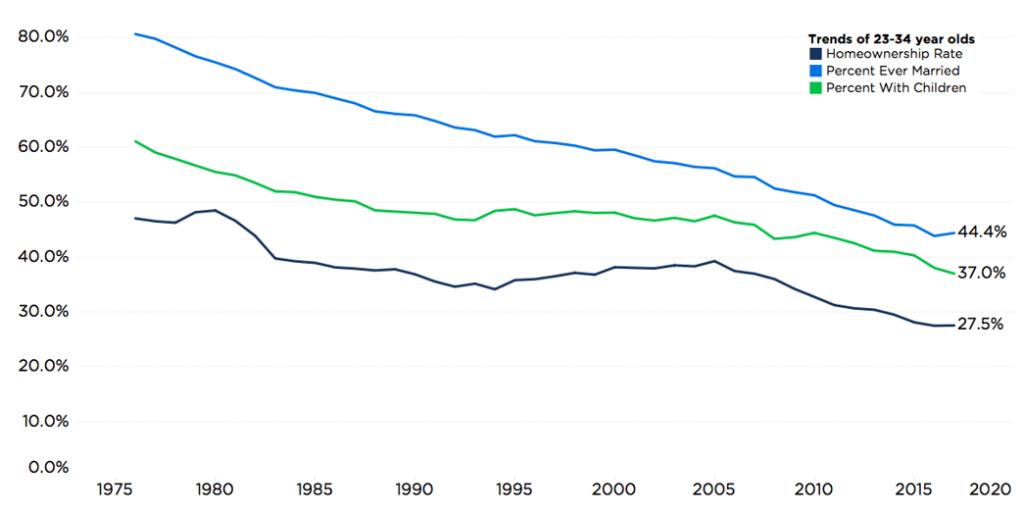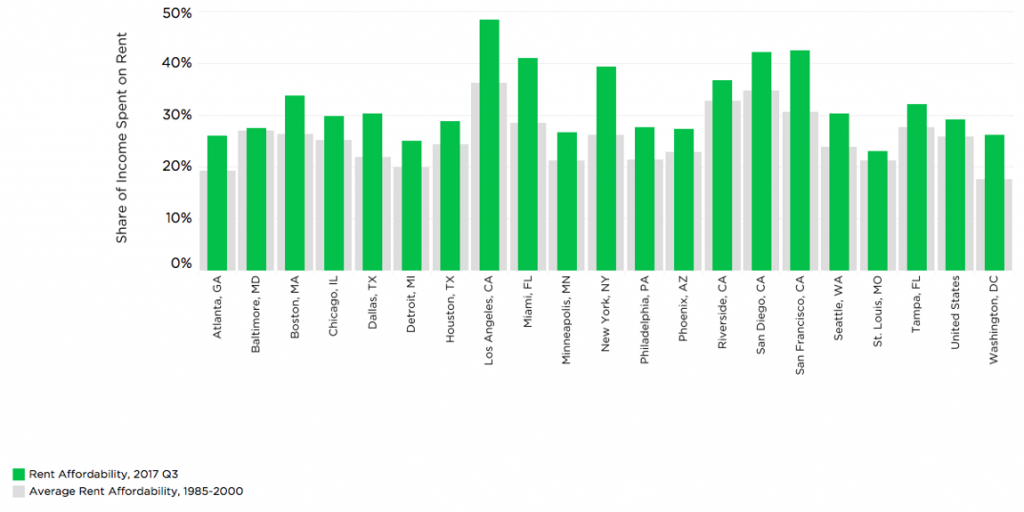2018 Predictions: Where Is the Multifamily Market Headed?

February 9, 2018
2 min read
Understanding the apartment market — and getting ahead of it — can help you prepare your business for changing conditions.
In this webinar, our Senior Managing Economist Dr. Skylar Olsen helps you do exactly that by sharing her predictions for supply and demand across different types of rentals, along with where rents are headed.
Macro rental trends
After a small slowdown, rent growth for all types of rentals is speeding up again at the national level. But locally, things vary widely, and in some areas like Pittsburgh or Miami, rents are stagnant or even falling.
Rather than a sign of despair, however, this shows a bit of volatility in the market after so much building. In other — and perhaps surprising — areas of the country like Sacramento and Salt Lake City, rents are heating up.
In fact, the areas where rents are increasing the most are those where good, high-earning jobs are coming in. Once rent increases more than 3 percent — which is happening in many markets — it becomes a serious burden for renters to keep up with the pace, because incomes aren’t rising as fast.
A big story to watch continues to be the growth of the tech industry, and the biggest story within that is the location of Amazon’s second headquarters. The new location of HQ2 can expect rents to grow at the same rate as some of the highest-growth areas in recent years, like Seattle.

Trends affecting the move to homeownership
Despite the recent apartment building boom, new house permits remain nearly as steady as they were before and through the recession, making finding homes to buy difficult.
The tension here has affected the outer cusp of renters who are considering buying, primarily millennials who are starting to grow their families (and doing so later in life than past generations). While household formation has slowed overall after recent steady increases, the number of those households who own homes has grown faster — and it’s beginning to approach the number of those who are renting. This means that millennials are hitting the age when they’re ready to buy houses.
The market is still volatile, however, and affected by trends at the local level as well as larger generational trends. In fact, most millennials are still in their twenties, and there’s a new, large generation right behind them who are just coming of age and moving into the rental market.

Affordability and the rental market
Affordability of for-sale houses and rents has come to the forefront of the rental market. Currently, there are fewer houses for sale among bottom- and middle-tier homes (the most affordable to new home buyers), keeping some renting for a while more.
At the same time, rents are more unaffordable than ever in many markets, with many renters reporting having nothing left of their paychecks at the end of the month for savings. As a result, the share of adults doubling up in their households has increased across all age groups, and lower-income workers with jobs in major downtown cores have steadily moved farther away from city centers, sacrificing distance for affordability.

Connect with us!
Learn how Zillow Rentals can help you reach your goals.
Stay informed. Stay ahead.
Access exclusive industry insights, market trends, and expert tips. Subscribe now to receive quarterly Zillow Rentals newsletters!